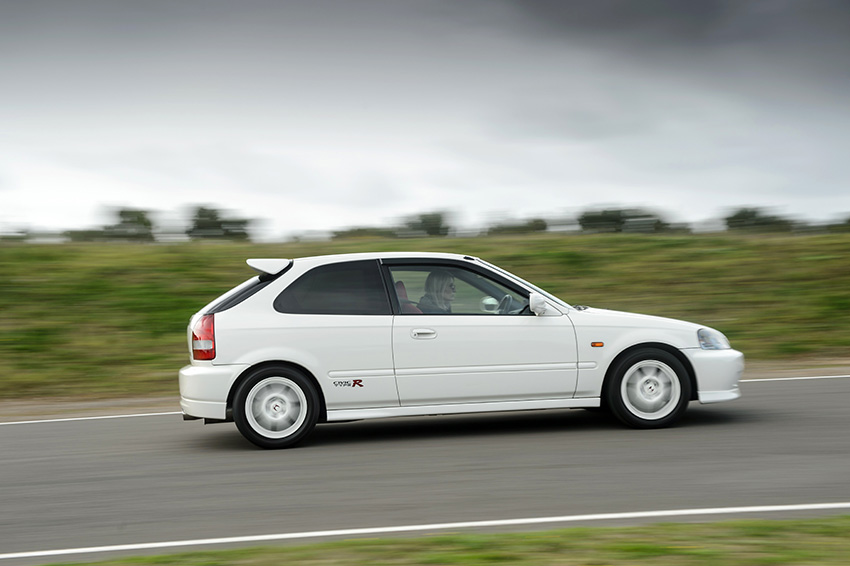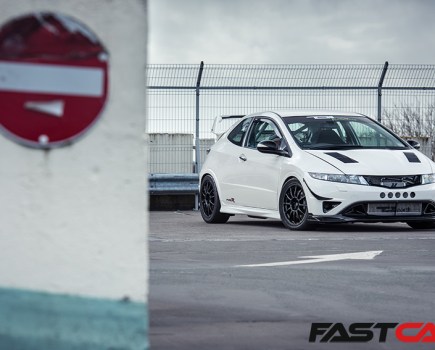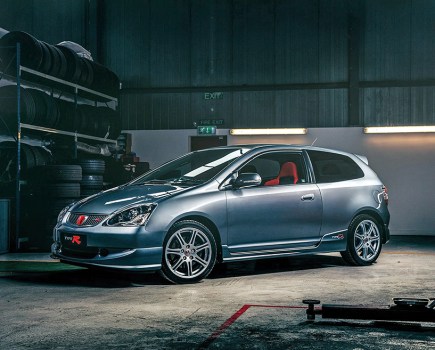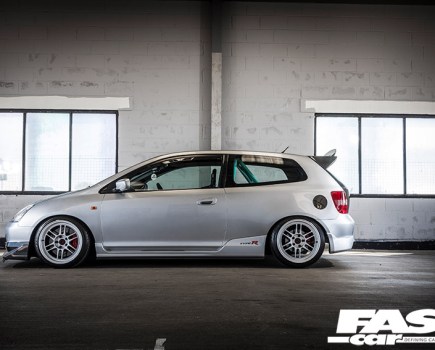The Honda Civic Type R EK9 is a hot hatch icon, an incredible driver’s car and, for many enthusiasts, the ultimate Civic Type R. Buying one isn’t easy, or cheap, but it’s worth it.
Soichiro Honda once said: “Racing improves the breed.” It’s a quote that’s been widely spread about the motoring sphere ever since. The classic ‘win on Sunday, sell on Monday’ ethos of Touring Car racing runs along the same lines, but few company figureheads have so concisely captured the spirit of it all as Mr. Honda. It’s because he walked the walk, he wasn’t just paying lip service.
Do you know how he reacted to Honda’s first-ever victory in Formula One? In a deadpan tone, with a hint of a smirk, he said: “We will not be content with this victory alone. We will study why we won and aggressively apply those winning technologies to new cars.” This is why Honda road cars today are such formidable things. The company works out which bits are operating best at full-tilt on the race track, then shoves it all into its road cars. This is all hidden behind a veneer of sensibleness; but always waiting to pounce when the cam profiles shift into the shadowy VTEC zone.
Type R Hondas are the most exciting and engaging result of this. The ‘R’ stands for ‘Racing’, and this is a badge that’s only been glued to a handful of models. You have the NSX Type R, the DC2 and DC5 Integra, the Accord Type R and Euro-R. And of course now six generations of Honda Civic Type R spanning 26 years.
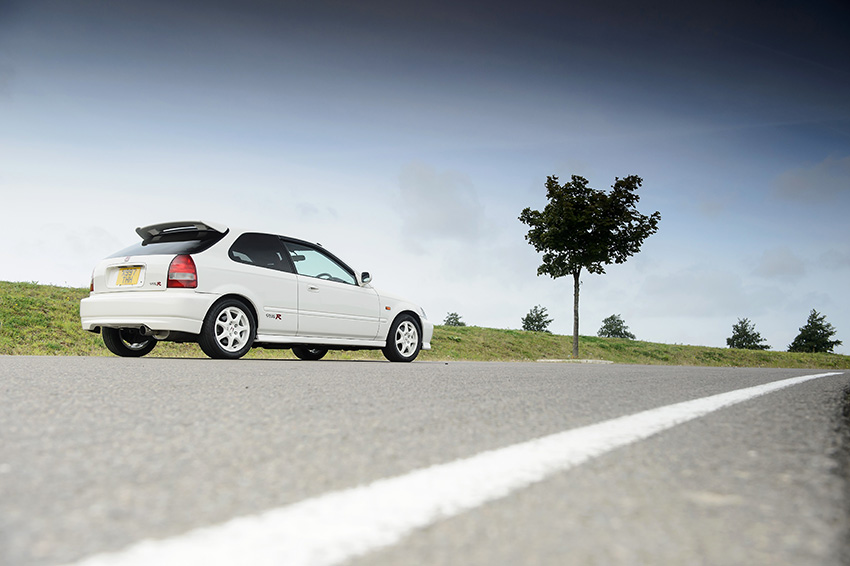
A Brief History of the Honda Civic Type R EK9
The EK9 was the original Civic Type R, and for many, it’s still the best. A genuine EK9 is so much more than simply a sixth-gen Civic hatchback with a racy motor dropped into it. Built in Suzuka from 1997-2000, these cars used the EK4 Civic SiR as a base and stripped out all of the sound deadening. It also carried out various other weight-saving measures to make it as light as possible. The entire shell was also seam-welded for strength, race car-style.
The hand-ported B16B 1.6-litre VTEC had the highest ever hp-per-litre of a naturally-aspirated production motor at the time. It offered a whopping 185hp, with that marked VTEC crossover point. The EK9 also received a close-ratio five-speed gearbox and limited-slip differential which aided acceleration. The interior sported the trademark details that have been a beloved feature of Type R models ever since – the red seats. Not forgetting the red door cards, titanium gear knob and leather Momo steering wheel.

The appeal of this iconic model to British fans of a certain age is easy to explain; as the hot hatch wars raged across the forecourts in the 1990s, the full-fat Type R didn’t make it’s way to our shores. Nor did it make it’s way into the US.
Sure, we had the VTi, which brought howling VTEC thrills to the UK tuning scene. It also proved in one fell swoop that Japanese engines offered a whole new realm of performance possibilities. But the Type R was the unicorn; made solely for the Japanese market, it took hot hatches into another dimension. It is, quite simply, one of the all-time greats.
Honda Civic Type R EK9 Most Common Problems
- Weak engine mounts
- Sticking rear calipers
- Smoke from the exhaust (valves seals or piston rings)
- Rusty rear arches
- Leaking rear light seals
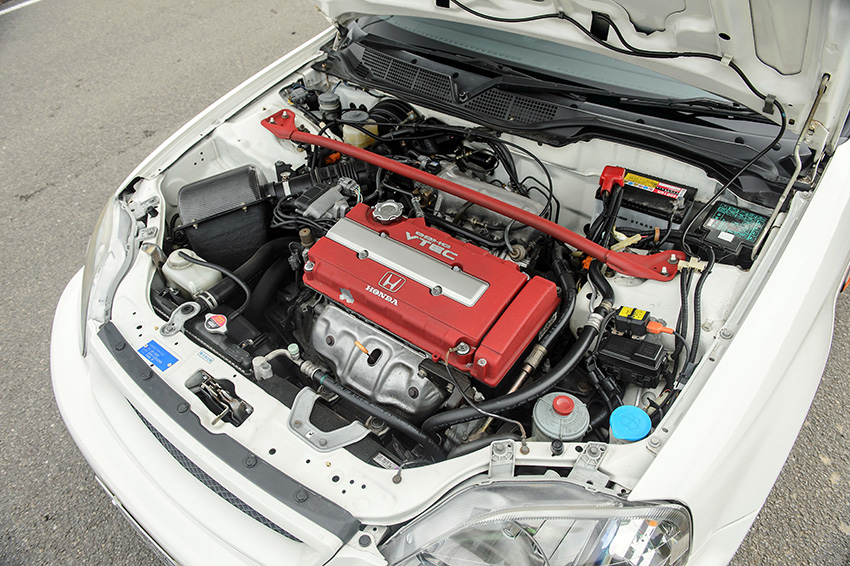
Honda Civic Type R EK9 in detail
Below, we’ll break the car into the key areas and explain what you’re getting yourself into. We’ll talk about the good as well as the bad, and what you should look out for when you’re buying an EK9 Civic Type R.
Civic Type R EK9 Engine
The B16 engine is sensitive to having the right quantity and quality of oil inside, particularly in this highly-strung hand-built guise. Make sure that it’s got the correct amount of nice clean oil, as this should hopefully be a sign that the owner knows how to look after it. Keenly interrogate them about their servicing and maintenance patterns. Don’t be afraid to take a detailed look at the history file to back it up. If you spot any metallic elements glinting in the oil, you’ll need to dramatically reduce your buying price. You’ll need to budget for an engine rebuild. With most cars we’d say just walk away at this point, although finding another EK9 isn’t easy.
A recent timing belt is a good sign. Officially these need changing every five years or 60k miles. However, a conscientious owner would hopefully be doing it more regularly than that. Upgrade to a tougher GReddy belt and you can potentially go twice the mileage according to owners.
VTEC issues
A metallic whining sound may be indicative of a dying power steering pump or oil pump. This isn’t a massive deal, but a good bargaining chip. And once the engine’s up to temperature, find a nice open bit of road and take it in and out of VTEC a few times to ensure the lobes engage and disengage correctly. If the engine isn’t happily switching into VTEC, there are a number of possible causes. It could be down to oil pressure or coolant temps – but it’s something that needs a specialist’s eye. Check the valve clearances have been done, and also check to see if the engine mounts have been replaced. These are a weak point, especially the rear mount that’s bolted to the subframe. They can wear out in as little as 40,000-50,000 miles.
Check for smoke from the exhaust too. Black smoke means it’s running too rich, white smoke could indicate head gasket failure. Blue smoke could be down to worn piston rings or valve seals. The generally accepted rule of thumb is if you’ve got smoke while on the throttle, it’ll most likely be the rings. Smoke when you lift off suggests stem seals, though a lot of smoke when crossing into VTEC would suggest valve seals. These are much cheaper to do, because if it’s the piston rings you’re looking at a big engine rebuild bill.
Honda Civic Type R EK9 Transmission
The gearbox should be slick with no crunching or grinding… and if the owner’s changed the transmission fluid at the right times, it will be. Third gear is the first synchro to wear. If it crunches going into third, that’s a clear sign that the car’s been thrashed. Also, check for clutch slip as these can wear surprisingly quickly. Clutch slave cylinders are also weak, though luckily these are cheap to replace.
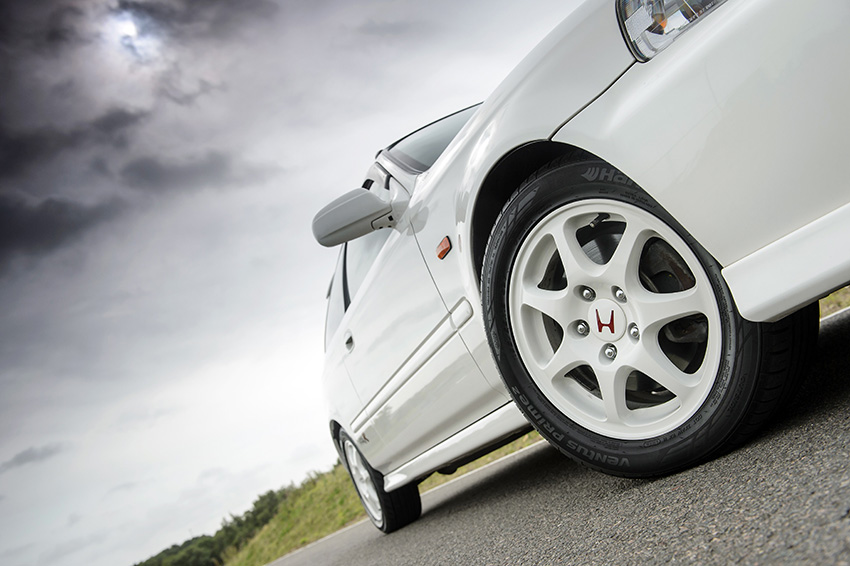
Honda Civic Type R EK9 Suspension & Brakes
Age-related issues are the most common concerns relating to the chassis. Both bushes and ball joints will want replacing. Rear trailing arm bushes are usually the first to show signs of wear, and owners recommend sticking to the OEM ones, and a fresh set will tighten up the rear end. Inner CV joints are weak, so listen for any grumbling noises when at full lock, while clunks when driving are most likely caused by worn anti-roll bar drop links. In terms of brakes, the rear calipers have a tendency to stick, so make sure that the handbrake releases correctly.
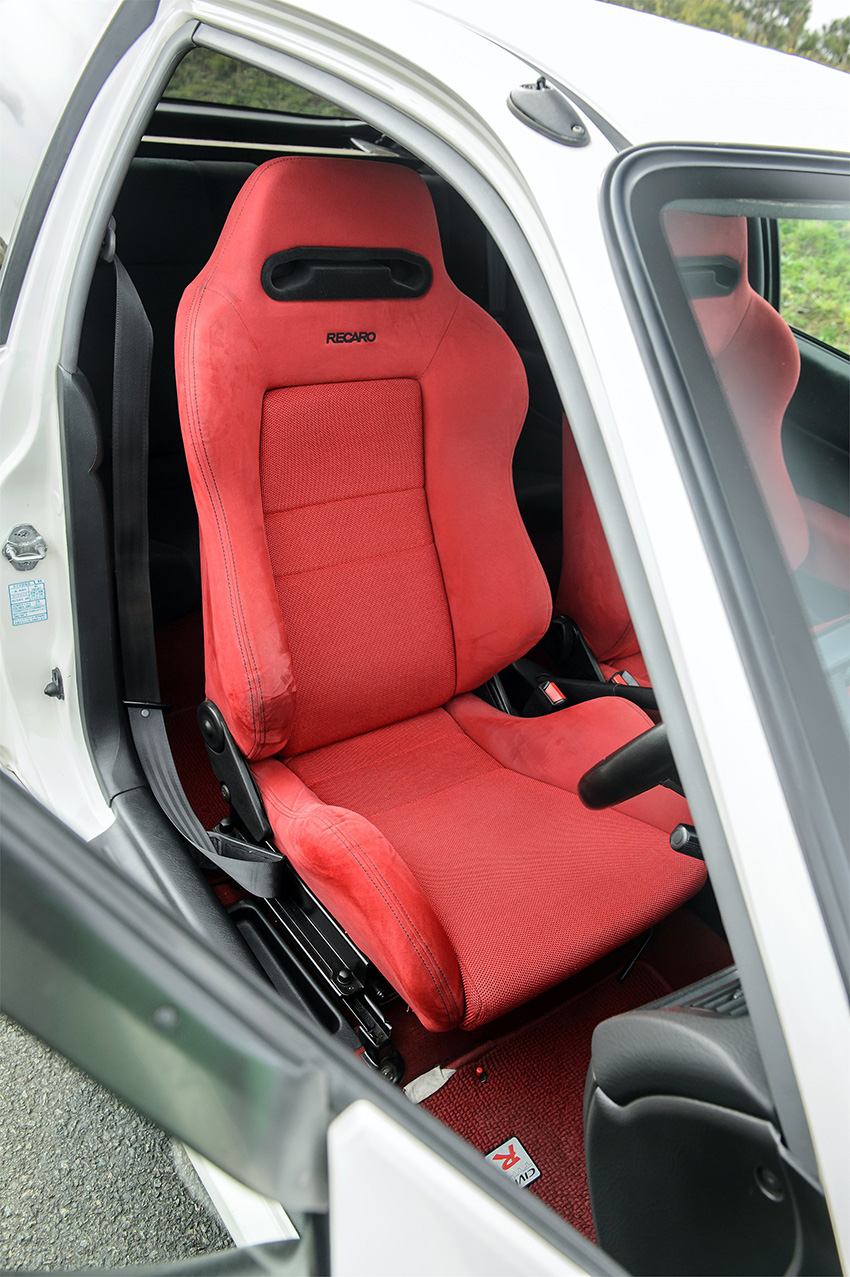
Interior
Interiors are generally pretty tough, although you’ll almost certainly find that the red seat fabric has faded to pink and the seat bolsters are worn and sagging. The driver’s right-hand bolster is the one that wears the most, but replacement foam from Recaro is available and isn’t too expensive. Also, make sure the seats easily slide on their runners and don’t move back and forth when the car’s in motion. The rear light seals fail, so check for leaks in the boots – some sealant will provide an easy fix if yours are letting water in.
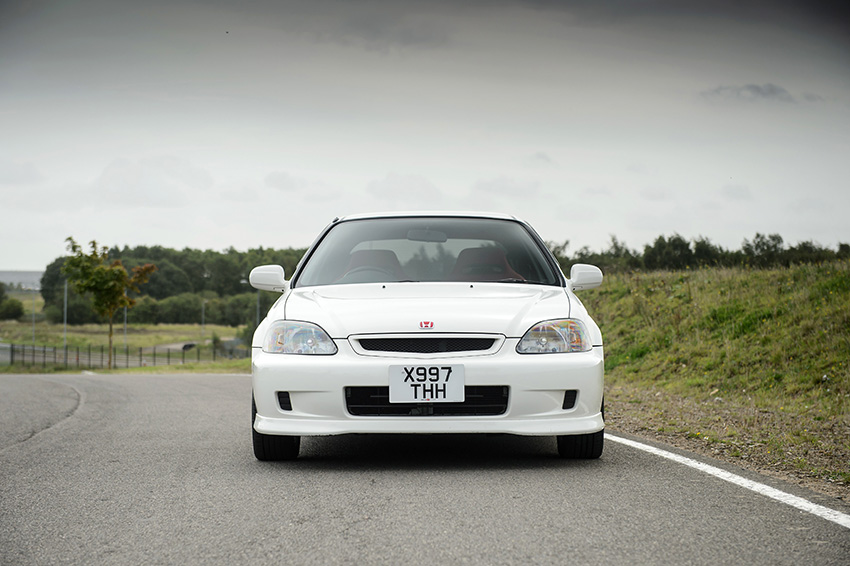
Exterior
When it comes to the bodywork, you need to check carefully; unlike later Hondas, there’s potential to find a fair bit of rust in an EK, especially on cars that have been in the UK for a while and have never been undersealed. This means it’s a good idea to check along the sills and across the underbody, and all around the windscreen – but be aware that you may find corrosion anywhere on a car that’s lived outside. The rear arches are one of the main areas to check, and not just from the outside – you can remove the speaker covers and look inside with a torch, and you can also see part of the inner arches using the rear light access holes. Accident damage is also not uncommon, so make sure everything lines up and be suspicious of areas of overspray.
Honda Civic Type R EK9 prices
Now comes the kicker. Finding a stock, clean Honda Civic Type R EK9 for sale in the UK is extremely rare. If you do manage to spot some for sale, the liklihood is that they’ve all been modified, and some will have been used on track. Now this isn’t neccesarilly a problem. A modified EK9 is a fine thing, and if the owner has been smart with their choices, it should only enhance the vehicle. Always do your due diligence though; ask about modifications, who fitted them, when they were fitted, and who makes the product.
In terms of prices, we’ve spotted only a couple for sale at the time of writing, the lowest being a 74k mile track-used example up for £15,000. The other looks to be a tidier example, with a higher 93k miles on the clock and up for sale at £26,995. That being said, it does have Spoon brake calipers, Volk TE37 wheels and a performance exhaust system.
Tech Spec: Honda Civic Type R EK9
- Engine: 1,595cc 4-cyl.
- Transmission: Five-speed manual gearbox.
- Max Power: 185hp @ 8200rpm.
- Max Torque: 118lb ft @ 7500rpm.
- 0-62mph: 6.6 seconds.
- Top Speed: 146mph.
- Weight: 1040 to 1090kg.
- Price When New: Approx. JPY2,000,000 (£16,500).
Words: Daniel Bevis and Elizabeth de Latour.
If you’re reading this EK9 buyer’s guide, then the chances are you’re interested in classic Japanese cars. The good news is that we’re launching our brand new Classic Japfest event this October 6th. Check out our Classic Japfest event preview here, or head over to event website here for more info and tickets.

